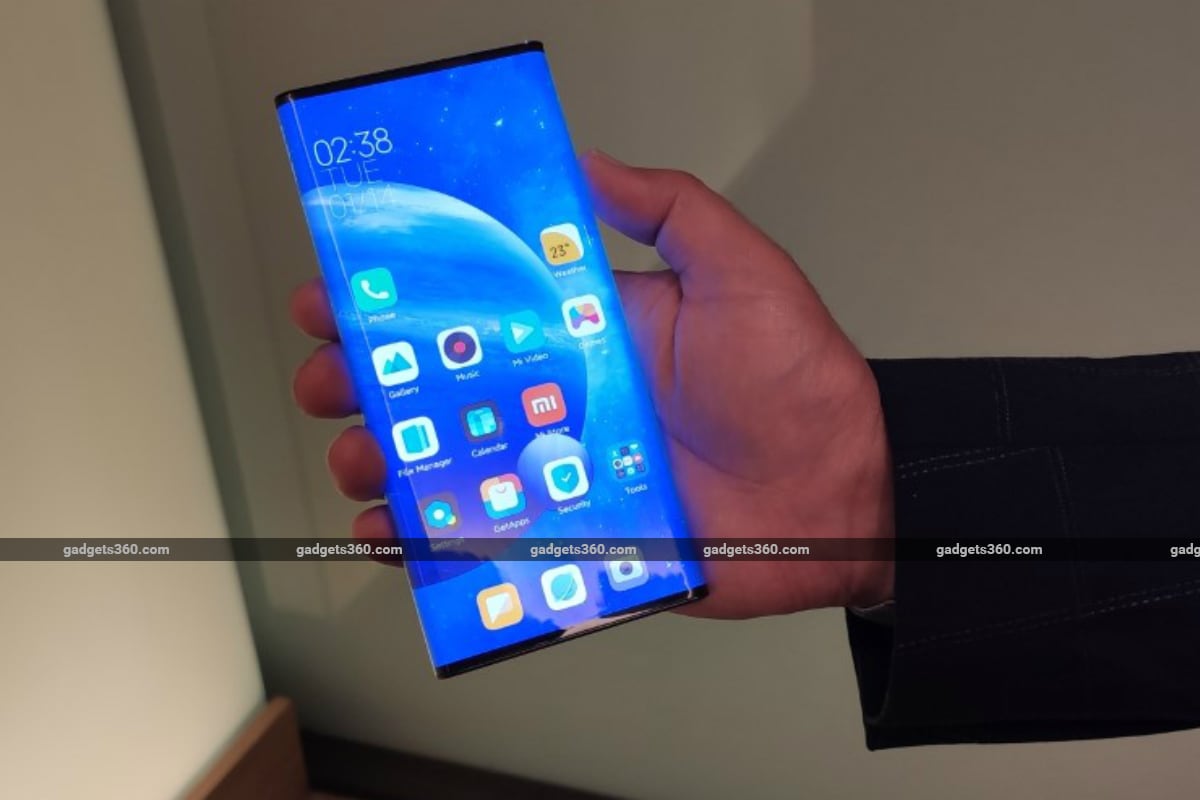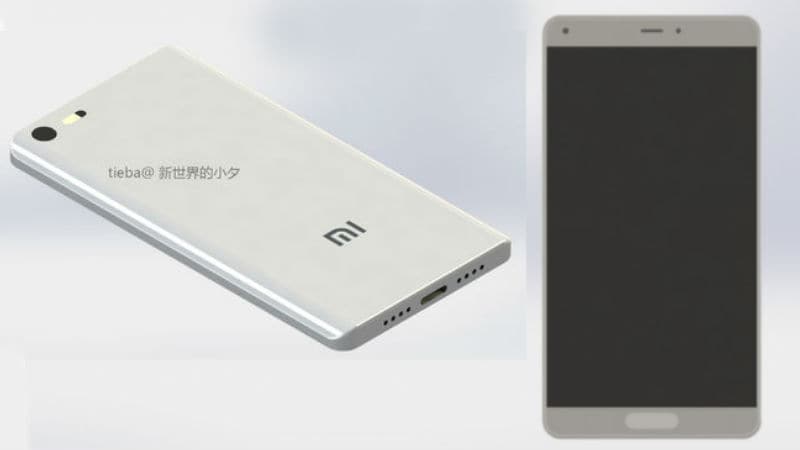Xiaomi is in plans to bring premium offerings in the country under its Mi brand. It has been five and a half years since Xiaomi entered the India market back in July 2014. The Chinese company started its journey with the Mi 3, but with the passage of time, it shifted significantly to the Redmi brand. Till date, Xiaomi launched over 40 smartphones in the country under the Mi, Redmi, and Poco brands, but the Redmi brand has so far dominated the company’s lineup with over 30 phones carrying the brand name that was coined back in 2013. The company, however, is now in plans to go beyond selling affordable smartphones under its Redmi branding and bolster its development towards the Mi brand that is aimed to include premium devices.
“Everything’s been driven by Redmi portfolio [so far],” said Raghu Reddy, Head of Categories, Xiaomi India, in a conversation with Gadgets 360. “2020 is the year where we’re looking to change that in a big way. You will see a lot more of Mi premium flagship devices that will make their way into India.”
The Beijing-based company in January last year officially spun off Redmi as its sub-brand to cater to a wider audience. However, that change was up until now limited to the Chinese market, where separate Redmi and Mi teams work under the mothership of Xiaomi.
Reddy, who was earlier heading the company’s online sales, said that the prime reason for delay was the limited Mi portfolio that didn’t have as many products in India as it has in China.
“We had only the Mi A series in the last two, three years — Mi A1, Mi A2, and Mi A3,” the executive told Gadgets 360. “Outside of that, we didn’t have any tangible product out there. But now, when we’re saying that we are looking to build on the Mi series to build premium flagship devices and bring them into the country, there is going to be clear differentiation and that means that you will see a very distinctive approach for Redmi and a very distinctive approach for Mi — both of which are going to be different from each other.”
In terms of differentiation, Xiaomi intends to deliver a distinctive experience to users, though it is unclear whether it will continue to offer the same MIUI on both Redmi and Mi phones in the future or build a new interface for its premium devices.
Xiaomi in the past tried to play in the field of premium smartphones a bit with the top-end Poco F1 variants and the Redmi K20 Pro. However, it didn’t succeed as OnePlus and Samsung have a strong presence there. Reddy, nevertheless, suggested that with the major comeback of Mi branding, the company would use more efforts to ultimately gain some significant traction in the premium market.
“Will that be a bit of overlap between Mi and Redmi? Yes,” he said. “But does that mean that Mi will get into the affordable territory? Probably, no.”
Xiaomi already has its air purifiers, connected devices such as smart bulbs and smart cameras, and smart TVs under the Mi brand in India. Having said that, Reddy underlined that the new change would bring a fresh range of products across all categories — not just limited to the smartphone market.
“You will see that approach percolate down to some of the other categories as well, which includes TVs and the smart home, smart IoT products that we have,” the executive stated.
To market Mi-branded products, Xiaomi has established a marketing team under Sumit Sonal, who was previously working with the company’s unified marketing team for promoting both Mi and Redmi brand devices. A similar approach would come into force for the Redmi brand.
“Redmi is about innovation for everyone — the innovations that come in in Mi but how do we take it to a lot many more people and how do we make it a lot more accessible is the philosophy with which we run Redmi, and that will continue to sort of straight stay true to the charter that we have for Redmi as a brand,” said Reddy.
Xiaomi presently has a strong offline presence through its Mi Home and Mi preferred partners. The sales infrastructure will remain the same for selling Mi and Redmi products this year. But nonetheless, Reddy told Gadgets 360 that the company would use different marketing and sales practices to gain success with its new move.
When asked on why Xiaomi chose 2020 for bifurcating its brands in India and started focussing on premium devices after playing for over five years largely in the affordable segment, Reddy said the company wasn’t ready for the expansion until now and didn’t have the infrastructure to promote premium products.
In the recent past, we’ve seen Oppo’s spin-off Realme taking on Xiaomi’s Redmi brand by offering similarly-designed smartphones at almost identical price points. Reddy, however, indicated that the move isn’t aimed to overcome the competition that the company faces nowadays.
“At the end of the day, when you’re running a business, I think competition is a given,” he told Gadgets 360. “You cannot be running with that — assuming that because that’s coming, let’s do something out. We have our own pace of doing things and we believe that it is the right time in the right place for everything.”
In September last year, Xiaomi grabbed eyeballs by unveiling the Mi Mix Alpha with a surround, flexible OLED display and a 108-megapixel primary sensor. The Mi Mix Alpha is positioned as a concept phone, due to hardware limitations. However, Xiaomi is likely to bring a commercial device based on the concept in the coming future — especially if we look at the historical records of the Mi Mix series that initially had the original Mi Mix as a concept phone but got the Mi Mix 2 as the phone for the masses with a similar edge-to-edge display design.
‘Good step, but positioning successful is a challenge’
Analysts believe that by bringing premium devices under the Mi brand, Xiaomi would eventually get a strong connect with its customers in India. The company has a proven record of taking on matured players including Samsung with its Mi smartphones in China. However, it is yet to demonstrate its success in the premium smartphone market in India.
“A few quarters back in 2019, Xiaomi attempted to capture the $300-$500 (roughly Rs. 21,200-35,400) price segment, essentially aimed at upgraders who would want to experience a flagship-like design and specifications and yet be pocket-friendly in comparison to flagship offerings by global brands like Samsung and Apple,” said Upasana Joshi, Associate Research Manager, IDC India. “The Poco F1 and Redmi K20/Pro series were the models launched, keeping in mind the mid-range positioning in the market. Both series were accepted well in the market, but not to the tune of affordable Redmi A or Note series launched earlier.”
Tarun Pathak, Associate Director, Counterpoint Research, noted that Xiaomi gave a glimpse at the future with Mi Mix Alpha and was able to generate a strong pull in the flagship segment with the Mi 9.
“I think this is a good step especially when globally Mi flagships are perceived as premium for Xiaomi users,” Pathak told Gadgets 360. “This will make a case for Xiaomi for consistent naming and positioning as it enters more markets — like Samsung has the Note and S series across all global markets.”
That said, Xiaomi is majorly popular as an affordable smartphone maker, while companies such as Samsung have a distinct presence in both affordable and premium market segments.
“To succeed in the premium segment, Xiaomi needs to differentiate the Mi lineup from its vast portfolio which is known for its value,” said Joshi of IDC. “In doing so, Xiaomi can position Mi smartphone to compete with premium global brands, such as Samsung and Apple, while keeping the price-conscious consumer in mind.”
Counterpoint Research’s Pathak supports what Joshi believes and said that positioning successfully is a challenge which Xiaomi need to keep a closer eye on.
As per the shipment numbers released by both Counterpoint Research and IDC for the third quarter of 2019, Xiaomi led the smartphone market in India — followed by Samsung, Vivo, and Realme. The company captured a market share of 26 percent, as per Counterpoint Research, while IDC estimated its share of 27.1 percent.
Pathak said that in the total Xiaomi sales, Redmi series is almost 95 percent. This number would be changed with the arrival of new Mi devices this year.
Xiaomi is likely to bring its Mi-series flagship phone to India soon to kick off the action. However, we can expect that the company may expand its approach by launching products from new categories, too.
The rumour mill suggests that Xiaomi has the Mi 10 and Mi 10 Pro as two of its new Mi-series flagships in the pipeline. That being said, it is safe to expect that the company would at least bring last year’s Mi 9 to the Indian market in the coming future.
Is Poco X2 the new best phone under Rs. 20,000? We discussed this on Orbital, our weekly technology podcast, which you can subscribe to via Apple Podcasts or RSS, download the episode, or just hit the play button below.



